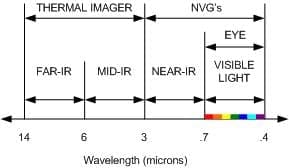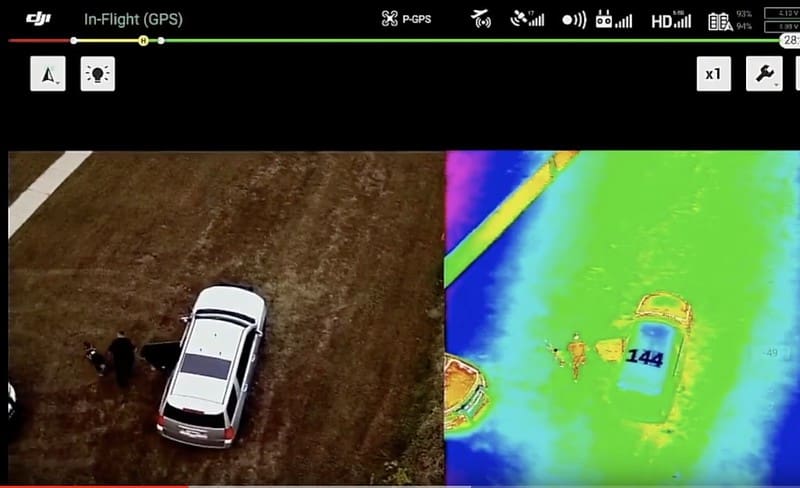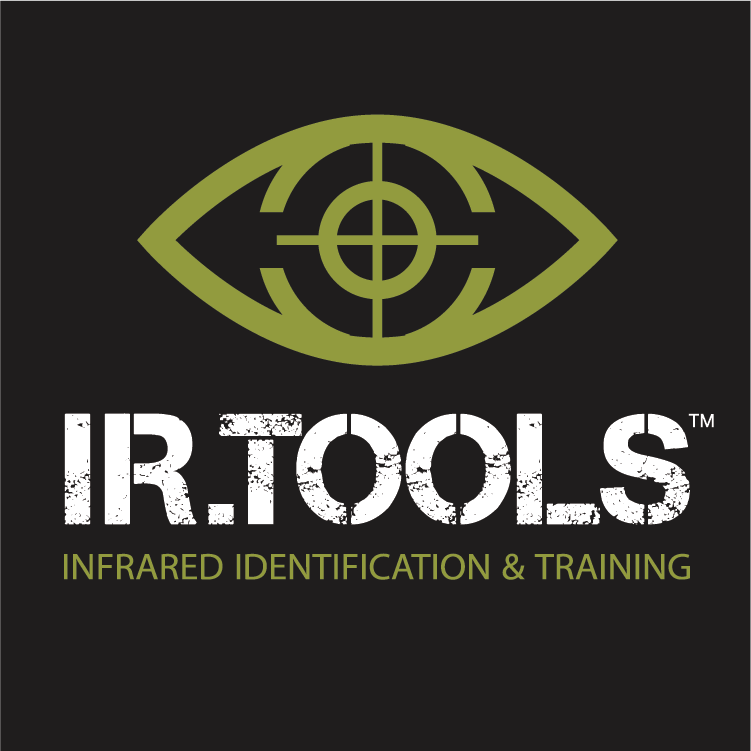Thermal Film Expands Thermal Imaging Results
Thermal imaging has become an indispensable tool for the military and law enforcement communities.
The ability for thermal devices to convert invisible IR energy into visible IR energy provides decisive advantages. Friend or Foe ID, Search and Rescue, Suspect chases, landing zones, battle-space awareness all benefit from thermal imaging.
However, thermal imaging alone does have challenges. While your scene is visible, the details of the scene are negligible. Meaning you won’t see fine details like the letters on a car. For example, a chase scenario with multiple vehicles will prove difficult to differentiate the suspect vehicle from the LE vehicle.
Thermal film minimizes these challenges. This versatile film expands the capabilities of your thermal imaging device by detecting and protecting the good guys.
In the end, safer and efficient operations are the results.
The Science of Thermal Imaging
Thermal imaging is possible because objects – living and dead – emit infrared energy.

The higher the object’s temperature, the higher the intensity of the infrared energy. Electromagnetic spectrum
Radio signals, IR radiation, visible light, ultraviolet energy, and land X-rays are all forms of infrared energy. Energy is characterized by its wavelength. These waves all have the same velocity, which we call the speed of light, but their wavelengths vary. Differences in wavelength establish the various categories of the electromagnetic spectrum. One category within the electromagnetic spectrum is infrared, which is further divided into categories.
These infrared categories are identified as Near, Mid, and Far Infrared. Far Infrared is the spectrum that includes thermal imaging.
The human eye is sensitive to wavelengths ranging from approximately 380 nm to 700 nm. As the wavelength increases beyond 700 nm, the light is classified as infrared, and our eyes lose the ability to detect it. However, the use of night vision and thermal devices converts invisible infrared light into visible light.
Thus, what was lost is now found.
What Are the Limitations of Thermal Imaging?
The results of a thermal imaging device are impressive but there are limitations.
Primarily, they cannot match the details of an ordinary visible-light camera. Even in ideal thermal conditions, it is difficult to interpret details or identify mission-critical elements in the scene.
Second, thermal imagers visually convey differences in temperature in the scene. These differences in temperature are shown in a contrast of colors. Potentially, a target and a nearby object will be the same temperature and show the same color. This will make it difficult to discriminate between the two.
Not knowing who is who leads to mistakes and possible casualties.
Thermal Film Reduces the question “Is that our guys?”

A piece of thermal film attached to your vehicles, persons, or objects will reduce your dependency on the details of the scene. The film provides a clear identifiable contrast between the target and the good guys. Therefore, you know who is who and where they are.
The film works by reflecting the temperature in its surroundings. So, while the film is not actually cold it appears cold to the thermal sensor. The “cold” film’s contrast is clearly different from the rest of the infrared energy (heat) in the scene.
For example, when the thermal film marker is attached to a police vehicle, it is detected and stands out from all the other vehicles on the road. The film appears as an unmistakable contrast in the thermal imager.
The actual color of the contrast is dependent on the palette settings of your device.
Applications of Thermal Film
The applications of thermal film range across several usage scenarios. Battlefield operations, aerial surveillance, suspect tracking, rescue missions, and weapons target training are some of the operations that find success with the thermal film.
The film is cut into various sizes and designs and then built into custom patches, panels, markers, and targets.
- Patches are worn to provide clear identification by soldiers or officers.
- Panels are used to ID vehicles, personnel, and landing positions.
- Markers are attached to ID police vehicles, tanks, buildings, and set ground control points.
- Passive and Powered thermal film targets are used for training exercises to improve shooting accuracy under a thermal scope.
Crucial Advantages to Thermal Film
- The thermal film is a passive material. This means it works without a power source or any kind of supplemental illumination.

- The thermal film works outside in the daytime and nighttime operations. The benefits of the film are not limited by the time of day.
- The thermal film even works in challenging environmental conditions. Your thermal device will detect the film in smoke, rain, fog, and even sandstorms. A layer of moisture may temporarily lessen the contrast, but water causes no permanent damage.
The popularity of thermal devices in Military and Law Enforcement operations has steadily increased the demand for thermal film.
Soldiers and Police have found that Thermal film is a proven technology that is contributing to safer and more successful day-to-day operations.
IR.Tools complete line of thermal film products will adapt to any operational scenario.
- Personal ID patches
- TIP Panels
- Vehicle Markers
- Thermal Targets
- Thermal Tape
Contact us today and begin accelerating the success and protection of your thermal device operations.

